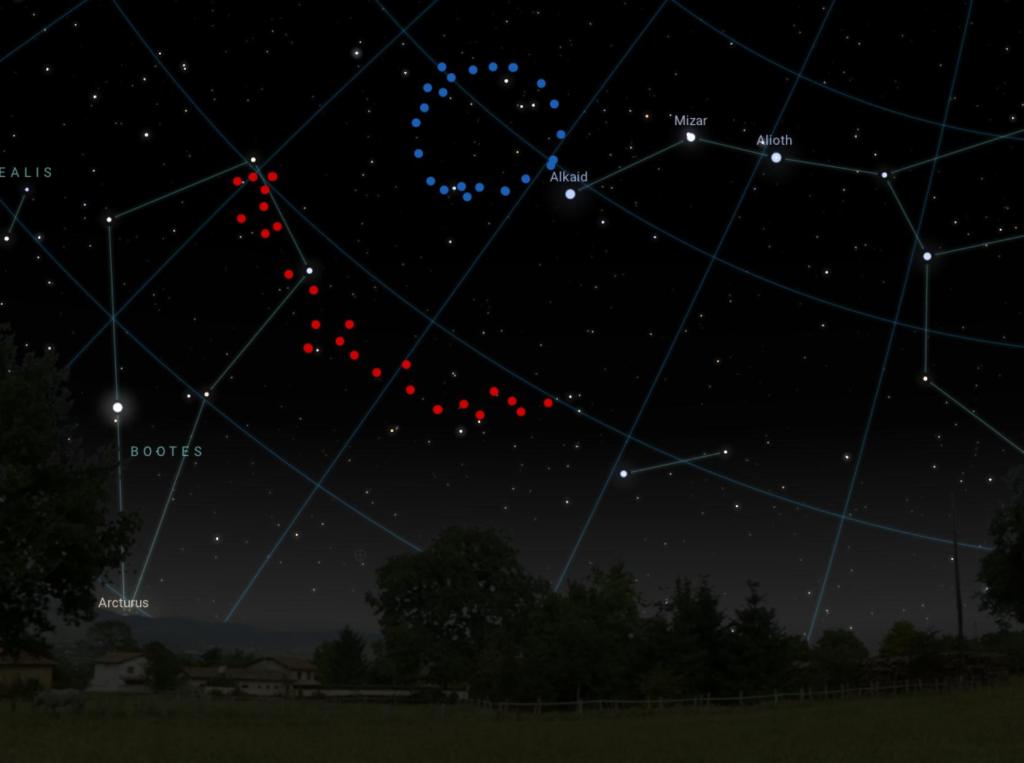Scientists hope to search for a “fifth force” that might exist beyond our current model of the universe by examining the minute movements of asteroids in our solar system, reports a new study.
This novel approach could expose hidden ultralight particles that might shed light on some of the biggest mysteries of the universe, such as the nature of dark matter and dark energy.
Videos by VICE
Our reality is governed by at least four fundamental forces: Gravity, electromagnetism, and the strong and weak nuclear forces. However, scientists have long suspected that other forces might exist outside what’s known as the standard model of particle physics, which is a robust theory that describes elementary particles and forces in the universe.
Now, scientists led by Yu-Dai Tsai, a physicist at the University of California, Irvine, have proposed a completely new way to search for a potential “long-range” fifth force that can affect objects across large distances. Tsai and his colleagues outline a proof-of-principle concept to “study for the first time the possibility of probing long-range fifth forces utilizing asteroid astrometric data,” meaning observations of asteroid motions, according to a paper published on Wednesday in the Journal of Cosmology and Astroparticle Physics.
“These long-range forces are so interesting because they can be related to many different types of fundamental physics,” Tsai said in a call with Motherboard. “There are several different motivations to search for a fifth force.”
Indeed, the idea of undiscovered forces is driven in part by the standard model’s inability to explain weird phenomena that have been observed in the universe. For instance, the regular matter that we experience every day appears to be vastly outweighed by dark matter, an as-yet unidentified material that accounts for most of the mass of the cosmos. The universe is also expanding at an accelerated rate, driven by a force called dark energy, which scientists have also been unable to identify.
Long-range fifth forces could help to explain both dark energy and dark matter, assuming scientists can detect them. It’s possible that the accelerated expansion of the universe might involve an undiscovered force, while dark matter could be made of ultralight particles that mediate these types of hidden interactions. (Indeed, in a separate study published last year, Tsai proposed a wild space mission that might be able to detect ultralight dark matter particles that might be bound to the Sun.)
If these long-range forces exist, they should produce tiny effects on objects in our solar system. Previous studies have searched for these perturbations in the motions of planets and moons, but Tsai and his colleagues are the first to investigate the possibility of using asteroids as a guide. The new approach was inspired in part by the huge amount of high-precision data that has been collected about asteroids in order to defend Earth from catastrophic impacts.
“We all know very well that these asteroids can be dangerous to us,” Tsai explained. “Some of these are what we call Near-Earth asteroids, and they have the potential of hitting the Earth, so they are tracked extremely well.”
Using optical and radar observations, scientists have been able to track the motions of thousands of asteroids to such a high degree of accuracy that it is possible to predict their trajectories for the next 100 years, or more. In addition, a host of new space missions have been dispatched to visit asteroids and observe them up close, such as NASA’s ongoing Lucy mission.
Meanwhile, NASA’s OSIRIS-REx is the latest spacecraft to collect samples from the surface of an asteroid, which the mission will deliver back to Earth later this year, and NASA’s DART spacecraft full-on slammed into an asteroid in 2022, a maneuver that actually changed the orbit of the targeted space rock.
All of these efforts have revolutionized our understanding of asteroid properties and movements, making it possible to account for very small changes in their motion caused by various pressures, such as solar radiation and the gravitational pull of other solar system bodies. This high-quality data could make it possible to isolate unexplained pressures acting on these rocks, including long-range fifth forces, if they exist.
“This is important for our human survival so amazing efforts have been made into understanding all of this uncertainty,” Tsai said. “Even though it’s difficult, we do have the ability to control most of this uncertainty to the level that we can start to have meaningful tests of the fifth force.”
To that end, Tsai and his colleagues demonstrate that signs of a fifth force might show up in long-term observations of asteroids. In particular, the team point to the so-called “perihelion precession” of these rocks, which is a slight shift in their orbits that occurs as they make their closest pass to the Sun. The researchers studied the orbits of nine Near-Earth objects as examples of potential asteroids to probe for signs of a fifth force, but they note that future studies could extend this basic framework to account for more than a million space rocks.
At this point, the idea of using asteroid motions to hunt for hidden forces is still in its conceptual phase, but Tsai’s team hope that their new proof-of-principle will inspire other researchers to develop this line of research further.
“There is actually already an existing huge amount of millions of asteroidal data sitting there without being analyzed, so this is to motivate everybody to analyze these millions of asteroids to study the fifth force and other fundamental physics,” Tsai concluded.




